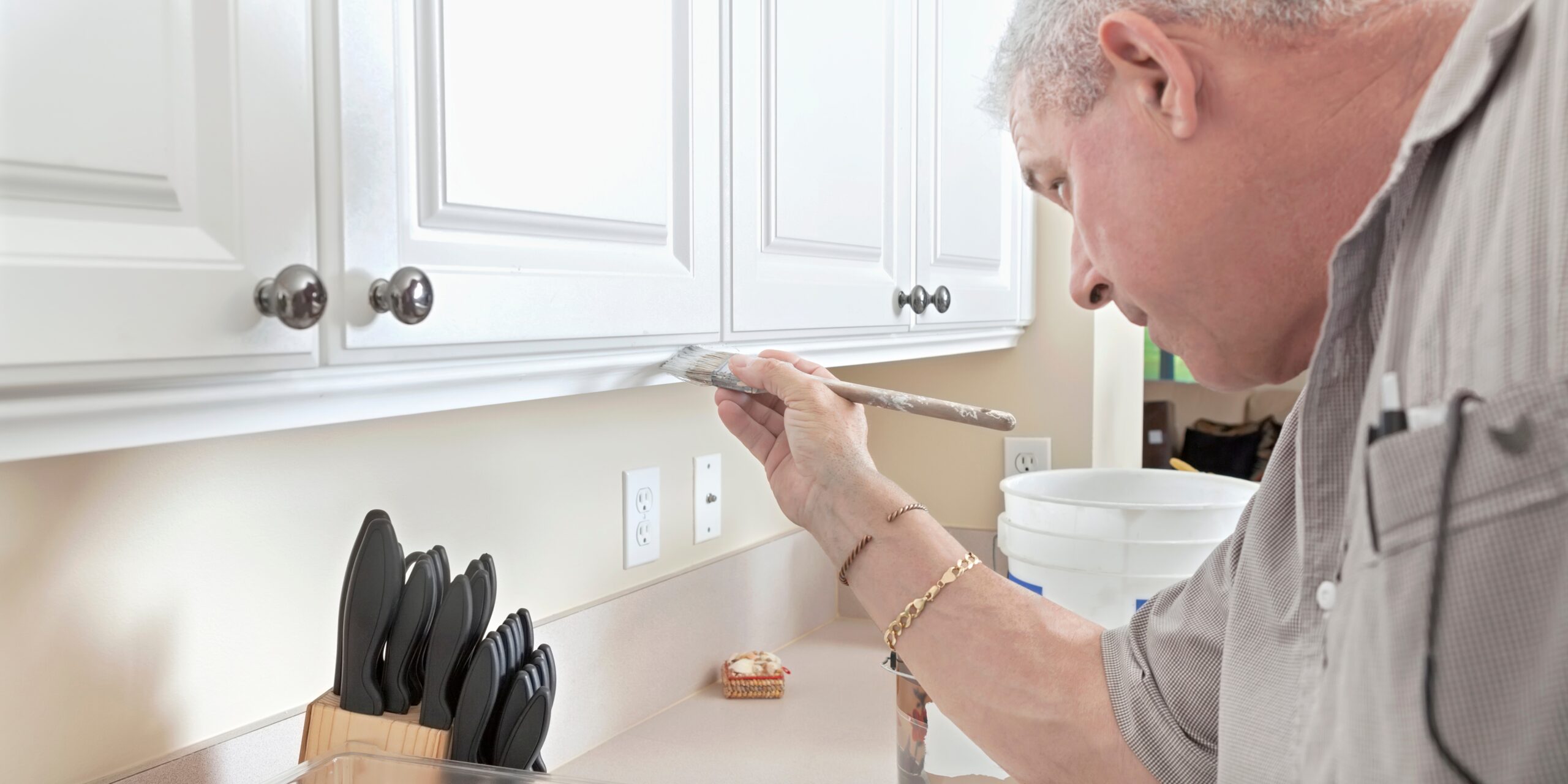
Best Paint for Kitchen Walls
Kitchens are the hardest-working room in any home. Steam, grease, splatters, and constant traffic all mean you can’t just use any paint. Choosing the right finish, formula, and color makes your kitchen easier to clean, more durable, and more stylish.
We’ve built this complete Q&A guide to answer every question you might have about painting kitchen walls — from safety and durability to prep, color choices, and maintenance.
🍳 Paint Basics for Kitchens
Q: What type of paint is best for kitchen walls?
Choose a water-based acrylic latex interior paint designed for washability and stain resistance. Look for labels like “Kitchen & Bath” or “washable/mildew-resistant”.
Q: Do kitchens need special paint compared to living rooms?
Yes. Kitchens face humidity, grease, and constant cleaning, so durability matters more. Regular wall paint will stain or peel faster.
Q: Do I need zero-VOC paint in a kitchen?
It’s a smart choice. Kitchens are high-use spaces, and zero-VOC paints mean fewer odors and better indoor air quality while cooking.
Q: Which brands make the best kitchen paints?
-
Sherwin-Williams Duration Home Satin/Eggshell (washable, moisture resistant)
-
Benjamin Moore Aura Bath & Spa (excellent in humid spaces)
-
Behr Premium Plus Ultra (budget-friendly, washable)
-
Valspar Reserve Kitchen & Bath (good balance of cost and performance)
✨ Sheens & Finishes
Q: What paint finish is best for kitchen walls?
-
Satin — top choice: durable, moisture resistant, easy to clean.
-
Eggshell — softer look, still washable in higher-end formulas.
-
Semi-Gloss — more durable, great near sinks or stoves, but can look shiny on big wall areas.
Q: Can I use flat paint in a kitchen?
Not recommended. Flat absorbs stains and grease, is hard to clean, and won’t hold up to scrubbing.
Q: Should trim and cabinets match wall finishes?
No. Use semi-gloss or gloss on trim and cabinets for durability and contrast. Walls should stay satin/eggshell.
Q: What about ceilings in kitchens?
Ceilings should usually be flat to hide imperfections. But in kitchens with high humidity, consider a matte mildew-resistant formula.
🎨 Colors & Style
Q: What colors work best in kitchens?
-
Warm whites & creams — timeless and clean.
-
Soft grays & greiges — modern, neutral, work with many cabinet styles.
-
Cool blues & greens — refreshing, calming in a busy space.
-
Bold accents (navy, charcoal, olive green) — dramatic, pair well with white trim or tile.
Q: Do dark colors work in kitchens?
Yes, but balance them with good lighting and light cabinetry/countertops. Dark walls can look elegant if used sparingly.
Q: Should I match kitchen paint to cabinets?
Not exactly — instead, choose a complementary color that makes the cabinets stand out. For example, white cabinets + soft gray walls.
Q: Are glossy colors good for kitchens?
Only on trim, cabinets, or backsplashes. Gloss on walls looks harsh.
🛠️ Prep Work
Q: How do I prep kitchen walls for painting?
-
Degrease walls with TSP or a mild degreaser
-
Rinse thoroughly and let dry
-
Fill holes and sand rough areas
-
Caulk trim and seams
-
Prime stained spots (especially near stove or sink)
Q: Do I need to prime before painting a kitchen?
Yes, if:
-
Covering dark colors
-
Painting new drywall
-
Covering grease stains
Otherwise, spot priming may be enough.
Q: Can I paint over old glossy kitchen paint?
Yes — but you must degloss first by sanding or using a bonding primer.
🎯 Application & Technique
Q: How many coats should I apply?
Two coats minimum for even coverage and durability.
Q: Roll or spray in a kitchen?
Roller and brush are best for kitchens since they’re small and detailed. Sprayers are messy around cabinets and appliances.
Q: In what order should I paint?
-
Ceilings
-
Walls
-
Trim and cabinets
Q: How do I cut in around cabinets and backsplashes?
Use a high-quality angled sash brush and painter’s tape for clean lines.
🧽 Maintenance & Longevity
Q: How do I clean painted kitchen walls?
Use a soft sponge with mild soap and warm water. For grease, a diluted vinegar solution can help.
Q: How often should I repaint kitchen walls?
Every 5–7 years with quality paint. High-traffic rentals or large families may need touch-ups sooner.
Q: Can I touch up just one section?
Yes, but with satin or semi-gloss finishes, touch-ups may show. Feather edges or repaint full wall sections for best results.
Q: Does sunlight fade kitchen colors?
Yes — especially bright yellows and reds. Use UV-resistant paints in sunny kitchens.
⚙️ Advanced Considerations
Q: Can I use cabinet paint on walls?
Not necessary. Cabinet paints are harder enamels; walls need washable wall paints.
Q: Do I need mildew-resistant paint in the kitchen?
Yes, especially in kitchens with poor ventilation. Look for Kitchen & Bath formulas that resist mold/mildew.
Q: What about painting behind stoves?
Use the same satin or semi-gloss paint, but consider adding a removable backsplash panel or tile for easier cleaning.
Q: What’s the best budget strategy for kitchen painting?
-
Buy mid-tier washable paints (not the cheapest contractor flats)
-
Standardize colors if you own multiple properties
-
Use 5-gallon buckets if painting multiple rooms/homes




No Comments
Sorry, the comment form is closed at this time.